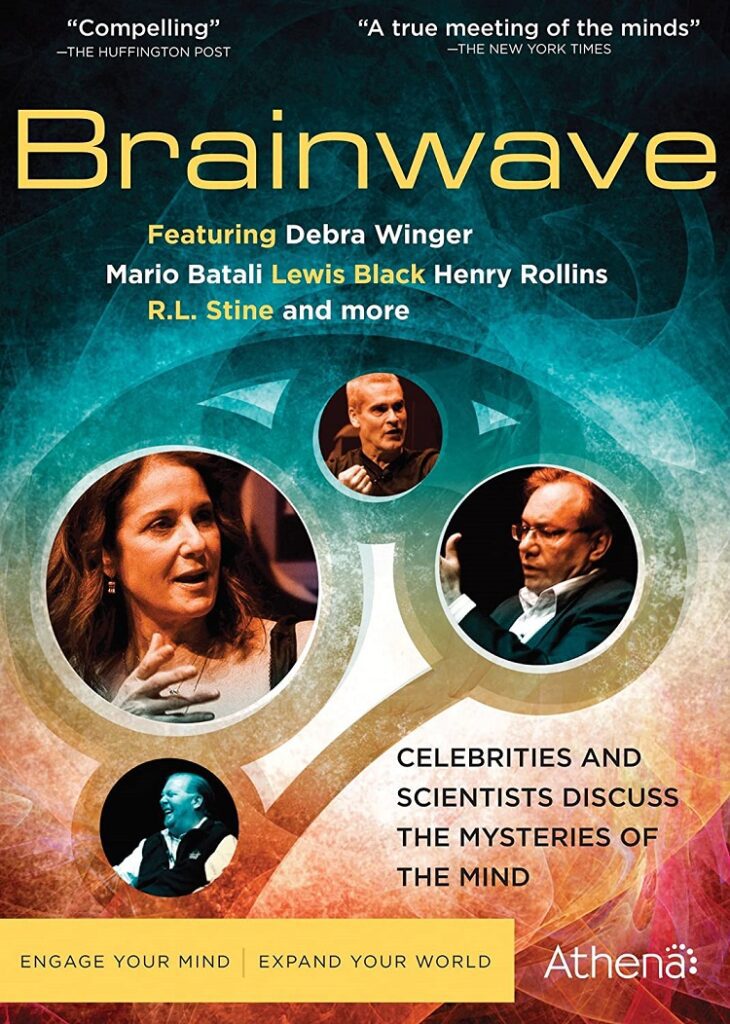
Brainwave is an annual lecture/conversation series that has been presented by the Rubin Museum of Art in New York since 2008. Each presentation pairs two thinkers from different walks of life – generally a creative with a scientist – and has them discuss some aspect of the brain and consciousness – happiness, fear, emotions, dreams – anything that goes on inside the mind. The general idea is to get two smart people who think in different ways to compare their notions in front of an audience.
The Brainwave DVD release contains 10 of these presentations, each around an hour long, featuring luminaries (or just celebrities) on a diverse range of topics: Henry Rollins discusses dreams with psychologist and writer David Eagleman, Lewis Black talks about the difference between rage and outrage with anger management specialist Robert Allan, chef Mario Batali and psychologist Paul Rozin talk about disgust as it relates to food. The general idea is an intriguing one. While a psychologist or neuroscientist studies the physiological, measurable effects of emotions or perceptions on the body, an artist uses these elements directly, to invoke or manipulate them with their art. An artist has to produce something, turn ideas into a painting, a dance, a joke, a book, and so has to be more in touch with the practicalities of cognitive phenomenon, while a scientist can explore them more theoretically.
When the ideas are explored in conversation, these Brainwave presentations can be fascinating. Chef Mario Batali and psychology professor Paul Rozin talk about the seemingly arbitrary distinctions made by people in what they find disgusting and what they find pleasurable in food. It’s light, its funny, it’s informative, and there is a real sense that both participants are listening to and learning from each other. A great lecture can rope in an audience regardless of the subject matter, and a few of these Brainwave presentation do just that.
Some are not so well conceived or executed, feeling more like two people giving solo lectures than an evening of conversation and learning. The subjects discussed are diverse, and while according to the Rubin Museum’s website the annual presentations have a unifying theme, the 10 lectures on these discs are more of a random sampling, until the last three lectures, with Rollings and Eagleman, Debra Winger and sleep scientist Robert Stickgold, and Amy Tan and psychologist Deirdre Barrett. These all came from the 2011 Brainwave series on dreams, and form an extended discussion on the origins, purposes and uses of dreams, as well as their place in the creative process.
These last three are also the best produced of the presentations, which is unfortunately uneven through the discs. Some lectures have slideshows that are discussed without being seen. The Laurie Anderson/Janna Levin presentation has really terrible audio, which mars an otherwise interesting talk about the nature of the universe, and whether it is finite or infinite and what that entails (this is also the only presentation not really about neuroscience or cognition at all.)
The Brainwave lecture series at Rubin is definitely intriguing. This selection of lectures on this release is somewhat problematic. Since it does not hold together as a thematic collection of lectures, there is no sort of clean line of progression from one episode to another. Their format is the same, but their content disparate, and not consistently strong from episode to episode. The lectures on dreams have that kind of cohesion, and suggest that a video release of a single series of lectures would have made a more satisfying experience. It makes this Brainwave release, as interesting as it often is, seem like a missed opportunity.